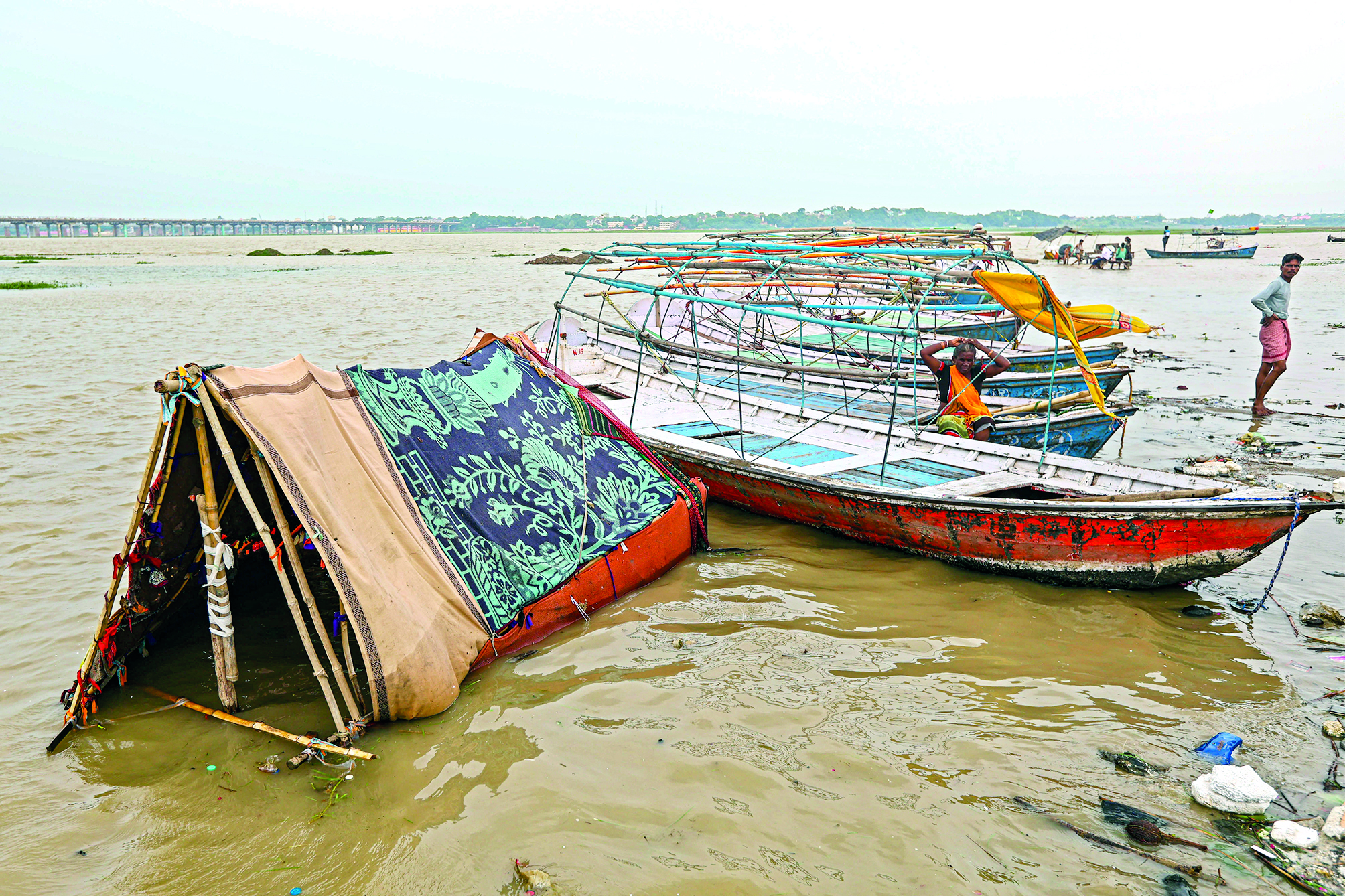Rivers swell, dams overflow as heavy rains lash several states

New Delhi: As monsoon rains continue to batter various parts of India, several states are grappling with the aftermath of severe weather conditions, including flash floods, landslides, and cloudbursts. The situation has led to numerous casualties, stranded pilgrims, and widespread infrastructure damage, prompting large-scale rescue and relief operations across affected regions.
On Sunday, western and central parts of India experienced heavy rainfall, causing significant disruptions. The India Meteorological Department (IMD) has issued warnings for heavy to very heavy rainfall in eastern, northeastern, and northern parts of the country on Monday. Isolated places in Bihar, Jharkhand, and Uttar Pradesh are likely to experience thunderstorms accompanied by lightning.
The situation in Himachal Pradesh remains grim as the death toll from recent flash floods triggered by cloudbursts has risen to 11, with two more bodies recovered from the Mandi district. Over 40 people are still missing following a series of cloudbursts in Kullu, Mandi, and Shimla districts on July 31.
Rescue operations are ongoing, with 410 rescuers from various agencies, including the Army, NDRF, SDRF, ITBP, CISF, Himachal Pradesh Police, and home guards, involved in the search efforts. Sniffer dogs, drones, and other equipment are being utilised to locate missing individuals. The local meteorological office has issued warnings of continued heavy showers, thunderstorms, and lightning in isolated places until August 8.
In Kerala's Wayanad district, rescue operations entered their sixth day as authorities intensified efforts to recover bodies from landslide-hit areas. The death toll has reached a staggering 221, with 166 body parts recovered so far. The number of missing persons has decreased to 180 from the earlier 206 after some were contacted by phone.
The search operations have extended to the Chaliyar river, which flows through Wayanad, Malappuram, and Kozhikode. The river has become a sombre reminder of the disaster, with 74 bodies and 134 body parts recovered from its waters, totaling 208 grim discoveries. In Maharashtra’s Pune, the army was deployed to assist in waterlogged residential areas following substantial water discharge from the Khadakwasla dam. The irrigation department reported releasing 35,000 cusecs of water from the dam due to heavy rainfall in catchment areas over the past fortnight.
Maharashtra Chief Minister Eknath Shinde has directed authorities to remain vigilant and evacuate people from dangerous zones to safer locations. The National Disaster Response Force (NDRF), State Disaster Response Force (SDRF), and Army have been put on standby to assist if needed.
A cloudburst in Jammu and Kashmir’s Ganderbal district triggered a flash flood, leading to the closure of the crucial Srinagar-Leh national highway. This closure has effectively cut off the Kashmir Valley from Ladakh and rendered the Baltal base camp for the Amarnath Yatra inaccessible. Some buildings in the area have also suffered damage due to the sudden deluge.
In Jharkhand, heavy rainfall has caused the swelling of rivers, particularly the Kharkai and Swarnarekha. The East Singhbhum district administration has issued an alert for residents in low-lying areas. As of Sunday morning, the Swarnarekha river was flowing at 116.58 metres against the danger mark of 121.50 metres, while the Kharkhai river stood at 126.83 metres against the red mark of 129 metres.
Neighbouring West Bengal has also experienced widespread rainfall, with the Birbhum district witnessing particularly heavy showers. The Damodar Valley Corporation (DVC) released 1.2 lakh cusecs of water from the Panchet and Maithon dams along the Jharkhand-West Bengal border on Sunday morning, impacting several south Bengal districts.
In Uttarakhand, more than 370 people, including pilgrims, were evacuated from the rain-ravaged trek route to Kedarnath. The path suffered extensive damage following a cloudburst in Junglechatti near Lincholi last Wednesday. To date, over 10,000 people have been rescued from Kedarnath, Bhimbali, and Gaurikund.
As the monsoon continues its relentless march across the country, state and central authorities are working tirelessly to mitigate the impact of these extreme weather events. Rescue and relief operations are in full swing, with various agencies coordinating efforts to reach those affected by floods, landslides, and other weather-related calamities.



